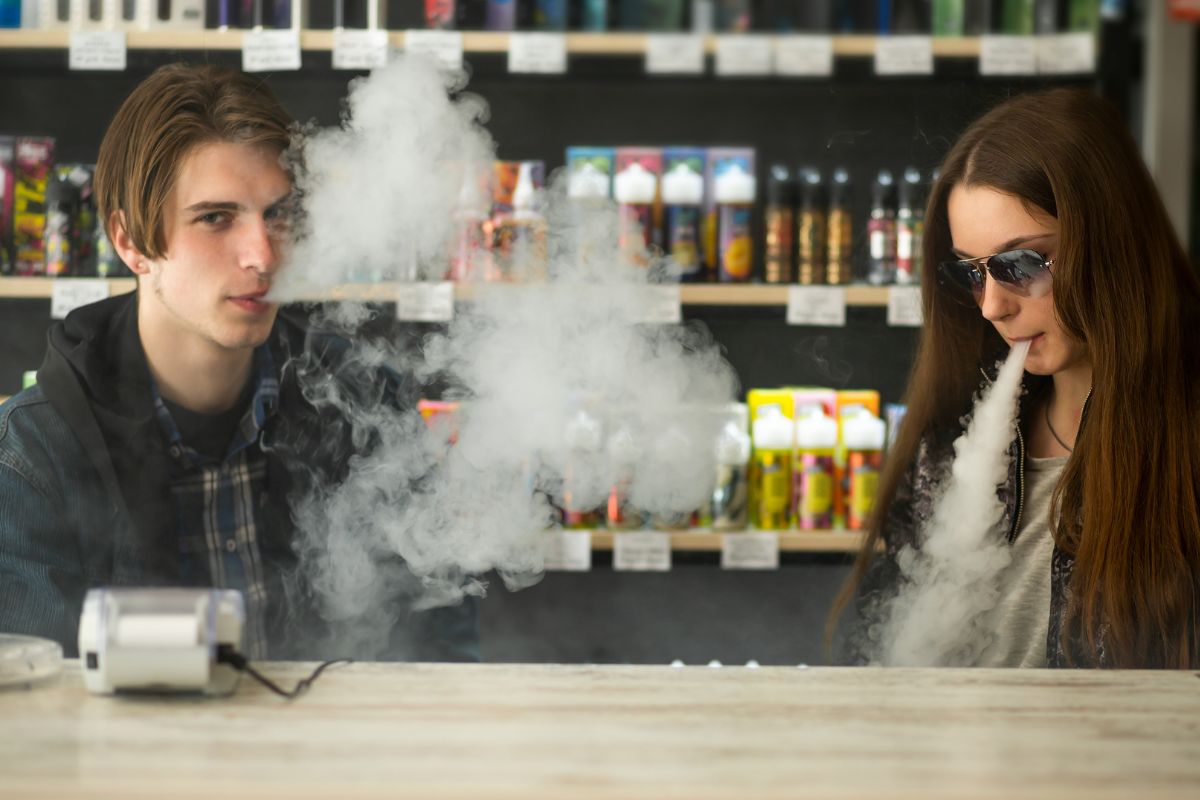Vaping has become increasingly popular over the years as an alternative to smoking traditional cigarettes. As more people embrace this trend, questions arise regarding the lingering effects of vape smoke in the air.
In this article, we will explore the duration of vape smoke in the air and various factors that contribute to its persistence.
Introduction
In recent years, the use of electronic cigarettes, or vaping devices, has gained momentum. Vaping involves the inhalation and exhalation of aerosol, commonly known as vape smoke or vapor.
It's crucial to understand how long vape smoke can remain in the air to assess potential risks and address concerns related to secondhand exposure.
Understanding Vape Smoke

1) What Is Vape Smoke?
Vape smoke is the aerosol produced when e-liquids are heated within a vaping device and subsequently inhaled by the user.
Unlike traditional cigarette smoke, vape smoke is generated through the heating of an e-liquid, which typically contains nicotine, flavorings, and other additives.
2) Components of Vape Smoke
Vape smoke consists of various components, including fine particles, volatile organic compounds (VOCs), nicotine, and trace amounts of potentially harmful substances.
The composition may vary depending on the type of device, e-liquid, and vaping habits.

Factors Affecting the Duration of Vape Smoke in the Air
Several factors influence how long vape smoke lingers in the air. Understanding these factors can provide insights into the persistence and potential exposure risks associated with vaping.
1) Type of Vaping Device
Different types of vaping devices, such as e-cigarettes, vape pens, and mods, produce varying amounts of aerosol.
Devices with higher power and larger e-liquid consumption tend to generate more vape smoke, which may affect how long it remains in the air.
2) E-liquid Composition
The composition of the e-liquid used in vaping devices plays a significant role in the duration of vape smoke. E-liquids with higher concentrations of propylene glycol (PG) tend to produce less dense aerosols that disperse more quickly.
On the other hand, e-liquids with higher vegetable glycerin (VG) content can create denser clouds that may persist longer in the air.
3) Environmental Conditions
Environmental conditions, such as temperature, humidity, and air circulation, can affect the persistence of vape smoke in the air.
In general, warmer temperatures and lower humidity levels can facilitate the evaporation of vape smoke particles, reducing their persistence. Conversely, colder temperatures and higher humidity can cause the particles to linger in the air for a longer duration.

How Long Does Vape Smoke Stay in the Air?
The duration of vape smoke in the air can vary depending on multiple factors. Here, we will discuss the short-term and long-term persistence of vape smoke.
1) Short-Term Persistence
In the short term, vape smoke can remain in the air for a few minutes to several hours. The density of the aerosol clouds, influenced by factors such as vaping device power, e-liquid composition, and inhalation techniques, plays a significant role in determining how long the smoke lingers.
2) Long-Term Persistence
While vape smoke typically dissipates within a relatively short period, trace amounts of particles can remain suspended in the air for an extended duration.
These particles can gradually settle on surfaces, including walls, furniture, and clothing. However, the concentration of these particles decreases significantly over time.
Health Concerns with Vape Smoke
Although the health effects of vape smoke are still being studied, there are concerns about potential risks associated with secondhand exposure.
Fine particles and VOCs present in vape smoke may have adverse effects on respiratory health, especially for individuals with pre-existing conditions such as asthma or allergies. It is advisable to minimize exposure to vape smoke, particularly in enclosed spaces.
Minimizing Vape Smoke Exposure
To reduce vape smoke exposure, consider the following measures:
- Vape in well-ventilated areas or designated vaping areas.
- Avoid vaping around individuals, particularly those sensitive to secondhand smoke.
- Use vaping devices and e-liquids that comply with safety regulations.
- Regularly clean surfaces where vape smoke particles may settle.
Conclusion
The duration of vape smoke in the air can vary based on factors such as vaping device type, e-liquid composition, and environmental conditions.
While vape smoke typically dissipates within a short time, trace particles may persist for longer periods.
Understanding these factors can help individuals make informed choices and take necessary precautions to minimize potential health risks.
FAQs about vape smoke
Is vape smoke harmful?
While the long-term health effects of vape smoke are still under investigation, there are concerns about potential risks, especially for individuals with respiratory conditions. Minimizing exposure to vape smoke is advisable.
Can vape smoke cause allergies?
Vape smoke may contain fine particles and volatile compounds that could trigger allergies or worsen existing respiratory conditions in sensitive individuals. It is important to minimize exposure to vape smoke if you have allergies.
How does vape smoke affect indoor air quality?
Vape smoke can contribute to a decrease in indoor air quality by introducing fine particles and volatile organic compounds. Proper ventilation and limiting vaping in enclosed spaces can help maintain better air quality.
Can vape smoke leave a residue on surfaces?
Yes, trace particles from vape smoke can settle on surfaces over time. Regular cleaning can help remove any residue and maintain cleanliness.
What are some alternatives to vaping indoors?
To avoid vaping indoors, consider designated outdoor areas for vaping or using alternative nicotine delivery methods such as nicotine patches or gum.




Leave a comment
This site is protected by hCaptcha and the hCaptcha Privacy Policy and Terms of Service apply.